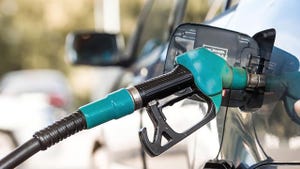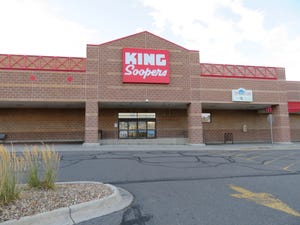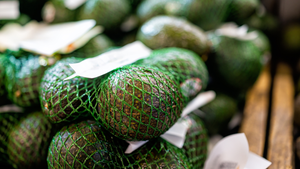What’s Poppin’ with Wine and Spirits?What’s Poppin’ with Wine and Spirits?
How retailers can capitalize on creative ways to court adult beverage shoppers. Here's how retailers can capitalize on creative ways to court adult beverage shoppers.
January 1, 2018
Picture this: You’ve had a long day at work and are casually perusing the grocery aisles when you notice bottles of champagne placed right next to a display of bubble baths. Chances are good you’ve discovered a great plan to round out your evening in an aisle of the supermarket. Along the same lines, you’re scrambling to purchase needed provisions for a weekend party you’re hosting and spot bottles of tequila in the produce department beside the papayas and limes, accompanied by an appealing callout for fruity margaritas. It’s likely you’ve just found a novel way to impress your guests.
Indeed, while there will always be plenty of foot traffic in the wine and spirits section of the grocery store, the opportunities are endless for retailers to put these items on the radar of shoppers who weren’t planning on visiting the aisle.
Cross merchandising can be a winner with almost any category, but a little extra planning and creativity to stimulate impulse sales of adult beverages lends well with this time-tested tactic.
Rebecca Running, GM for Los Santo’s Mezquila, says she has seen success stories with adult beverages in sections of the store shoppers normally wouldn’t expect. “Retailers do well putting wine in the meat section, so when you're buying a big steak,” an adjacent convenient red wine display is a perfect enticement. “In the summer seasons, putting a floor stock of Mezquila next to pineapple, jalapenos and fresh fruit, and showing the ability to shake a really cool cocktail, can bring success.”
Writing up Recipes
Posting cocktail recipes next to the complementing spirit can help retailers to get the category noticed. The recipes can easily be sourced from distributors, who know their products well and the best ways to elevate them. Running says Mezquila uses social media to crowdsource cocktail recipes using their mezcal-tequila blend, and posts the winning combinations on its website with an accompanying product-finder to show consumers which nearby retailers are carrying it. Another example is Brockmans Gin, which, in honor of the fall season, created a recipe for a Black & Gold using pineapple juice that provides a great opportunity for cross-merchandising.
Dishing Out Deals
Another great way to keep wine and liquor flowing off the shelves is to promote savings in the category and show consumers that the items are being offered at a great value.
“Wine and spirits are a destination category and growing faster than the rest of store—retailers need to take advantage of this and promote it accordingly,” says Scott Moore, SVP for Miami, Fla.-based Southern Glazer’s Wine & Spirits. “Understanding price promotion and what is driving incremental volume by promoting the right brands at the right price doesn’t always have to be the lowest, but continues to show value to the consumer.”
These competitive prices must also be attention-grabbing in order to have the desired effect on the consumer. “The key is merchandising … it’s all about getting the product on the floor and advertised by the retailer with some kind of a deal. That’s really the key to execution in wine and spirits,” Robert Sands, CEO of Victor, N.Y.-based Constellation Brands, said during a recent call with investors.
Stocking the Right Stuff
Retailers must be sure they are carrying the best selection of products for their consumer base, including keeping up with new innovations while ensuring top-sellers and old favorites are in stock. Grocers should also keep in mind which types of wines and spirits are doing the best in the marketplace.
Moore advises that whiskey and bourbons sales are continuing to grow, and have become a rival to the vodka segment when combined. He notes that while people have been talking about the “demise” of the vodka segment, it continues to be a huge contributor.
“The spirits category is experiencing dollar sales growth of 4.3% and case volume growth of 7.1%,” says Rob Hohmann, the beer, wine and spirits client insights consultant with Chicago-based marketing research firm IRI. “Tremendous growth of American ‘craft’ vodka Tito’s and American whiskey, primarily premium bourbon, [has] helped fuel success down the spirits aisle. Additionally, the astounding success of brands like Jameson and Fireball have prompted growth in their respective segments.”
Capitalizing on Innovation
Beer innovation continues to explode, but the category may have worn out its welcome with the barrage of new products and unexpected ingredients. Shawn Bavaresco—president and partner at Portland, Ore.-based Blossom Brothers, which produces artisan wine coolers—says this has given wine and liquor companies the opportunity to step up their own innovations and woo consumers.
“When shoppers are walking through the wine and liquor sections, they are thinking, ‘I'm open. Turn me on to something here,’” he says. “It's not like they’re going to the laundry detergent aisle and saying, ‘Okay, I'm a Tide person and I will go straight for the Tide and then I’m out.’ It’s one of the rare sections in retail where the person’s open-minded and actually shopping.”
Bavaresco also notes that much of this innovation is seen in packaging, with wine beginning to show up in cardboard containers and even cans.
“We take the term ‘shopping’ for granted, but shopping isn’t going off your list and checking off items,” he says. “Shopping means you go looking for shoes. You don’t go in the shoe store knowing exactly what you want. You shop. And I think retailers need to optimize that opportunity by creating visual experiences and categories within the cold box that are a little more broad-minded than just craft beer, cider and wine.”
Beverage Alcohol: ‘A Retail Story’
The next chapter for total beverage alcohol sales can be written against the backdrop of a “retail story,” said Robert Sands, CEO of Victor, N.Y.-based Constellation Brands, during a call with investors.
Sands said that there are key issues at play that are extremely important for retailers to understand—but many do not.
Sands’ first point: Retailers and manufacturers must address consumers’ desire to be able to shop across all three categories—beer, wine and spirits—since about 55% of consumers are shopping and drinking across each.
His second point: If a retail basket contains all three alcohol beverage products, the total value of the ring will be several times larger than a basket that has only one category in it.
“That’s what retail is all about, and the most successful retailers in the country are all about [increasing] the average size of the ring,” said Sands. “There probably is no better way to do that than to get the consumer to purchase all three categories—because if they do, that consumer is going to be a very big purchaser in that store.”
Drinking Digitally
Most people today spend more time looking at the internet than living in the real world, and plenty of shoppers walk around the grocery store looking at their phones. Retailers have taken notice and given their customers plenty of online resources to help them with their shopping trips. On that note, a number of grocers have come up with a clever way to get the online world excited about wine by posting pairing advice on their websites.
For example, Lakeland, Fla.-based Publix offers a detailed chart that lists different categories of wine (e.g. full-bodied and sweet, light-bodied and fruity) and checks off which foods each one pairs well with, such as strong cheese, heavy pasta and poultry.
In the same vein, San Antonio-based H-E-B offers a chart that breaks the wines down by actual type, and even includes less-common varieties such as Sangiovese and Sauternes.
Gragert’s Grocery, and independent store in Creighton, Neb., has made its digital wine and food pairing guide even more interactive. It allows its customers to click on the type of dish, such as beef/lamb/veal or pasta/vegetarian, and then customize the search even further by giving users the opportunity to choose a flavor profile (spicy, cream sauce, Asian). Once the shopper chooses the correct details of their meal, they are given three recommended wines with “good,” “better” and “best” ratings. Customers can even click on the wine that is selected for them for a full description of its flavors and characteristics.
About the Author
You May Also Like




